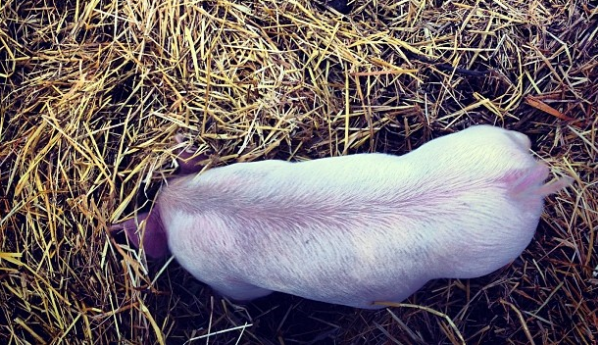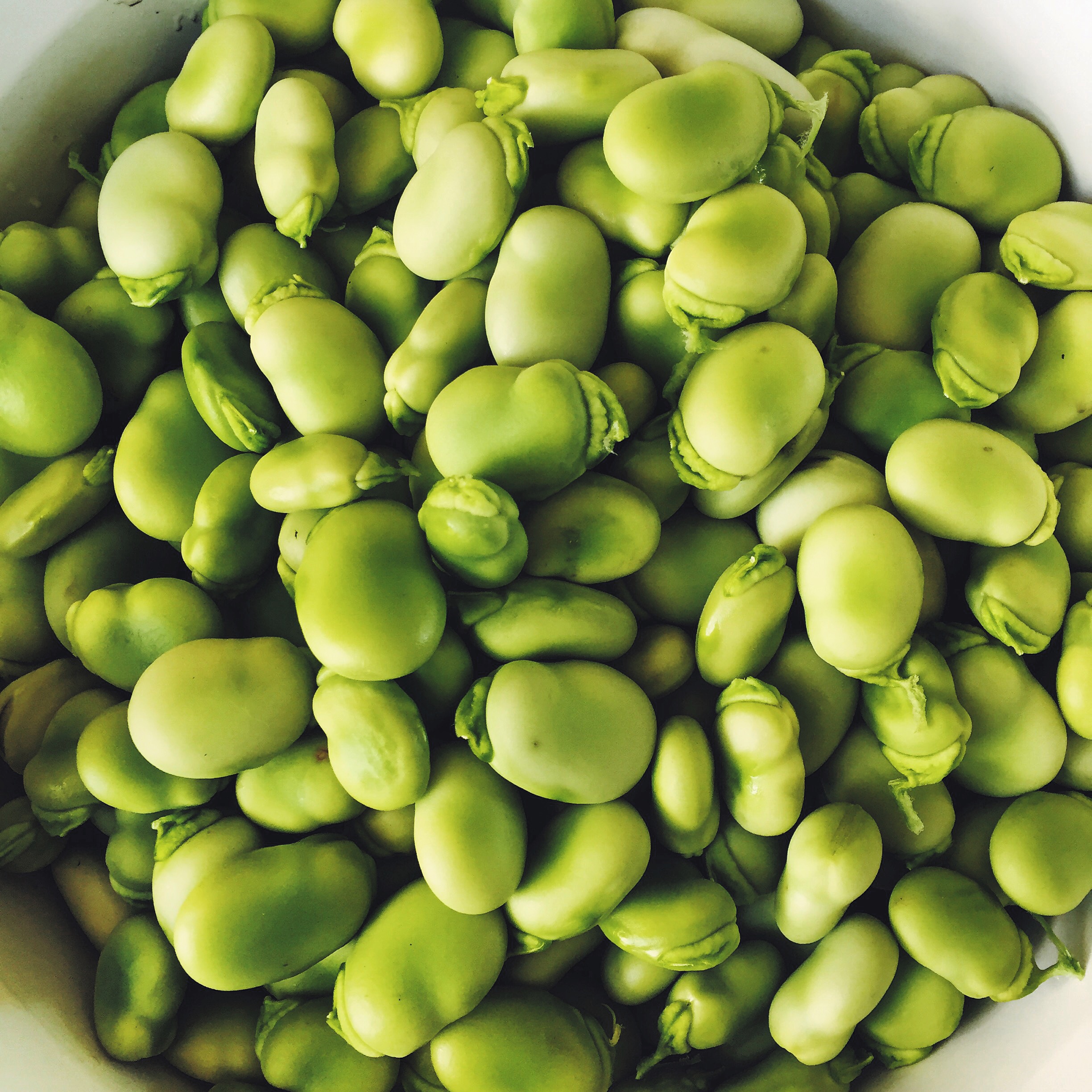
Winter is a time for maintenance on many levels. Self-care, cleaning and restoring tools, fixing up infrastructure, mucking stalls, perfecting your crop rotation and planting schedule, studying up on recent publications, reading seed catalogs, tractor maintenance, etc.
December
Harvesting
- From the field: Brussels sprouts, kale, cabbage, chicory, radicchio, carrots, parsnips, turnips, rutabaga, beets, sunchokes, leeks, burdock, scorzonera, salsify
- In hoop house/high tunnel/low tunnel: Mustard greens.
- From storage: Winter squash (maxima, moschata), onions, garlic, shallots, grains
- Microgreens are always a quick and reliable source of greens through the winter and spring. The shallow open flats are very useful for microgreen production, which we carry in the Concentrates’ showroom, as well as coir and kelp extract. With the low light and heat conditions of winter, heat mats and supplemental lighting are very helpful for reliable and quality production.
Perennial Maintenance
- Once leaves fall on raspberries, cut back old growth to soil level.
- Pest management: check for deer incursions weekly; show shoe around the base of tree trunks to pack down vole tunnels.
- Order rootstock; collect scions for grafting.
- Prune all bearing trees, establishing an open structure of branches that allow maximum penetration of sunlight and circulation.
- Remove rotted fruit still hanging on the trees to reduce rot spore inoculum.
Infrastructure
- Tool Maintenance: take a file to all blades on hoes, harvest knives, hoof trimmers, pruners.
- Josh Volk has a great article on tool sharpening that he wrote for Growing for Market in 2010
- Tractor, engine, and implement winterization and maintenance.
- Sanitize harvest bins, buckets, sinks, and knives.
- Clean and sanitize greenhouse tables, propagation & seeding area
- Do all-farm tidying, organizing, and consolidating.
- Inspect and purchase worn-out items: drip tape? Row cover? Weed barrier? Greenhouse film?
Crop Planning
- Perfect your crop rotation: Are you maximizing your soil’s potential to grow cover crops? Keeping the soil covered throughout the season? Maintaining biodiversity and attracting beneficial insects? How many pounds of PAN did you harvest last year–would it be appropriate to adjust the ratio of legumes to cereals?
- Interpret your soil test and determine your fertilizer blend for next year, source its ingredients.
- Prepare seed order: The Pick A Carrot search engine is a great tool to use to compare prices and availability of Organic and conventional seeds from different seed companies – it can cut your time searching for seeds in half.
- Now is the time to read and catch up on new lean farm techniques, soil health building methods, and the current discussions circulating in farm circles. Renew your subscription to Growing for Market!
- Sign up for and attend off-season conferences, like Small Farm School, the Small Farms Conference, The Culinary Breeding Network‘s Variety Showcase & Squash Sagra, Friends of Family Farmers‘ Fill Your Pantry & Infarmations, Oregon Tilth‘s Organicology, the Tilth Alliance conference, the Home Orchard Society‘s All About Fruit Show, etc. Check out our events page to stay up to date on goings on in the PNW Ag community!
Propagation
- Source/purchase your potting soil(s) and germinating mixes, or their components.
- Inspect your trays and source/purchase as needed.
- Organize your work area and tools–dibblers, seeders, mixing equipment, writing implements, record-keeping paperwork, tray labels, heat mats/lights, wicking irrigation.
- Compost tea can efficiently be applied to starts as you water them. Does your brewer work, and do you have the ingredients on hand? Molasses, worm castings?
- Do you fertigate your seedlings? Gather your fish emulsion, or other soluble nitrogen source.
- Do you provide trace minerals and myco inoculants? Gather your kelp emulsion and mycorrhizal inoculants for a pre-transplant dunk.
Animals
- Have a fecal eggs per gram count done on animals that are breeding and poultry, most veterinarians offer this service or ship fresh samples to MidAmerica to receive counts via email.
- If animals need to be dewormed based on fecal results, find the right product for the parasites and follow up with a fecal to ensure treatment was effective. Most dewormers do have an egg, meat and milk withdrawal time. Planning to treat while animals are not producing will help avoid non-productive weeks during a busy season.
- Ensure that all creatures have a dry, draft-free, well-ventilated location to escape the wet, windy December weather.
- Visually check all animals and do a hands-on check for body condition. Animals wearing their heavy winter coats are often much thinner than they appear. By physically putting your hands on your animals you will have a much better idea of their weight. Bucks and rams in particular should be carefully checked over as being in rut tends to run them down.
- Pick-up a book or two to self-educate on your animals. Concentrates has a wonderful collection of animal wellness books available for sale including, but not limited to: “Keeping Livestock Healthy” by N. Bruce Haynes, D.V.M., “Temple Grandin’s Guide to Working With Farm Animals” by Temple Grandin and “Holistic Goat Care” by Gianaclis Caldwell.
January
Harvesting
- From the field: beets, storage radishes, turnips, rutabaga, carrots, leeks, sunchokes, scorzonera, burdock, salsify
- In hoop house/high tunnel/low tunnel: Mustard greens
- From storage: Winter squash (maxima, moschata), onions, garlic, shallots, grains
Perennial Maintenance
- Pest management: check for deer incursions weekly; show shoe around the base of tree trunks to pack down vole tunnels.
- Prune all bearing trees, establishing an open structure of branches that allow maximum penetration of sunlight and circulation.
- Collect scions for grafting
- Remove mummified fruit still on trees to reduce rot spore inoculum.
Infrastructure
- Take inventory of all irrigation, row cover, propagation, tools, traps, etc.
- Test heating system in greenhouse and check for repairs
Bed Prep
- Make fertilizer order according to fall soil test results (now through February)
- Mix or order soil for seeding
Crop Planning
- Make seed orders by January 1st
- Order perennial rootstock for grafting
- Order potato seeds
- Order bareroot strawberry plants
- Order asparagus corms
- Order cover crop seed
Seeding Indoors/Greenhouse
- Onions, leeks, artichoke, cardoon, endive, lettuce
Animals
- Start prepping for new life on the farm! Consider where your animals will deliver their new babies and start assembling needed supplies.
- If kidding, calving, lambing, farrowing, foaling and so on is new to you find a mentor that has a few years of experience and line up a vet that has assisted in your species.
- For registered stock, be sure paperwork is ready and in order.
- Find a place to buy honey bee nucs and get hives and bee-keeping gear in order.
February
Harvest
- From the field: Leeks, claytonia
- In the hoop house/high tunnel/low tunnel: Mustard green
- From storage: Winter squash (maxima, moschata)
Perennial Maintenance
- Finish pruning fruit bearing perennials.
- Chip prunings for ground cover, but remove obviously cankered wood.
- Finish composting and mulching any perennials that were not finished last fall.
- Finish thinning canes.
- Plant new trees as early as possible.
- Remove any spiral trunk guards used on young trees.
Infrastructure
- Order needed drip irrigation, row cover, propagation trays, tools, traps, etc.
- Turn on greenhouse heating system
- Set up trellising for tuberous and bulbing flowers sending up shoots, ie. peonies, anemones and ranunculus.
Bed Prep
- Look for a dry window to mow and do a very shallow till of cover crops that are starting to bloom or are sitting on bed space that will need to be planted within the next 4-8 weeks.
Propagation
- Gather your tools (dibblers, seeders, trays, record-keeping paperwork, labels).
- Gather your potting soils and components.
- Gather any other amendments–fish emulsion, kelp, compost tea, mycorrhizal inoculants.
- On heat tables: Celeriac, onions, leek, artichoke, cardoon, endive, lettuce, spinach, cilantro, kale, chard, broccoli raab, cabbage, chinese cabbage, bok choi heads, endive, parsley, celery
Planting in Ground Under Cover – Late February
- Carrot, arugula, broccoli raab, cress, mustards, turnips, chois, miner’s lettuce, mache, endive, shungiku, radishes, onions, garlic, onion sets, fava bean, peas, fenugreek
- Plant new fruit trees and berries as early as possible
- Inoculate perennial roots with ecto or endo mycorrhizae when planting
Animals
March
Harvest
- From the field: Claytonia
- From the hoop house/high tunnel/low tunnel: Mustard greens
Perennial Maintenance
- First holistic spring spray, suggests Michael Phillips, of liquid fish, pure neem oil, & effective microbes.
- He also recommends applying an organic fertilizer blend to nonbearing trees in order to grow a strong framework of branches quickly.
- Train branch crotch angles on young trees with limb spreaders.
- Weed around nonbearing trees.
- Check trunks for borer damage.
Infrastructure
- Begin installing drip irrigation into the fields as you transplant.
Bed Prep
- Pull old and less productive planting of strawberries if you need to make room in your crop rotation. General rule of thumb is that strawberries loose productivity after three years.
- Look for a dry window to mow and do a very shallow till of cover crops that are starting to bloom or are sitting on bed space that will need to be planted within the next 4-8 weeks.
- Cover crop mowing and incorporation takes place when they first begin flowering. Consider submitting a cover crop analysis to OSU’s Central Analytic Lab. Sampling and lab submission instructions here.
- Amend your fields as you prepare for planting. Consider soil temperature when timing your nitrogen application: remember than the phase of rapid N uptake, which varies by species, is about four weeks from germination; but nitrogen does not mineralize very quickly in cold soils. Give your amendments time to become available, or plan to use highly soluble sources like fish emulsion.
- Spreaders should be calibrated and maintained.
Seeding Indoors for Transplants
- Tomatoes, peppers, eggplant, tomatillo, ground cherry, lettuce, endive, bok choi heads, cabbage, kale, celery, parsley, fennel, cabbage, cauliflower, spinach
Planting in Ground
- Favas, mustard greens, onions, chervil, cilantro, fennel, parsley, arugula, cress, salad radish, turnips, spinach, chard, peas, claytonia, carrots, beets, chicories, salsify, scorzonera, shungiku
- Late March: Sunchokes, potatoes
- Perennials: Bareroot strawberry plants – planting into landscape fabric can be incredibly useful to keep weeds down and keep plants from putting too much energy into spreading runners.
Animals
- Have a fecal eggs per gram count done on animals that might have a high count such as new mothers and babies between the ages of 8 weeks and 16 weeks , most veterinarians offer this service or ship fresh samples to MidAmerica to receive counts via email.
- Ensure that all milking equipment is in good working order and sanitized including stanchions, buckets milk machines and storage containers.
- Strip and sanitize grow-out areas.
- Order new poultry chicks and ensure brooding areas and implements are cleaned, disinfected and in working order. Make sure that heating sources are in working order and that the brooder is able to maintain age-appropriate temps.
- If there is a warm, sunny day, check on bee hives! Make sure everyone is healthy and happy and feed if needed. If there is a die-out, clean and sanitize for new bees.




